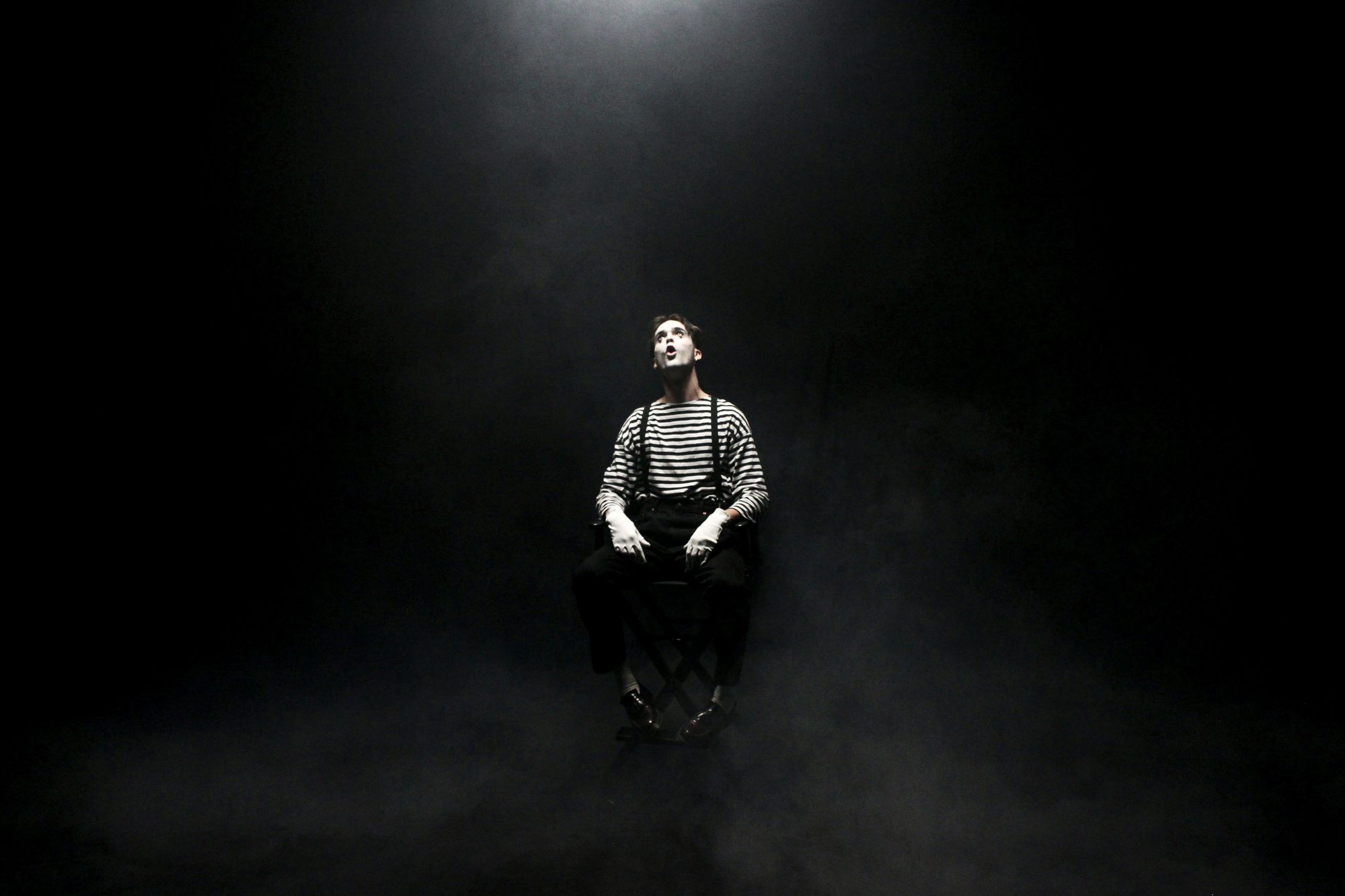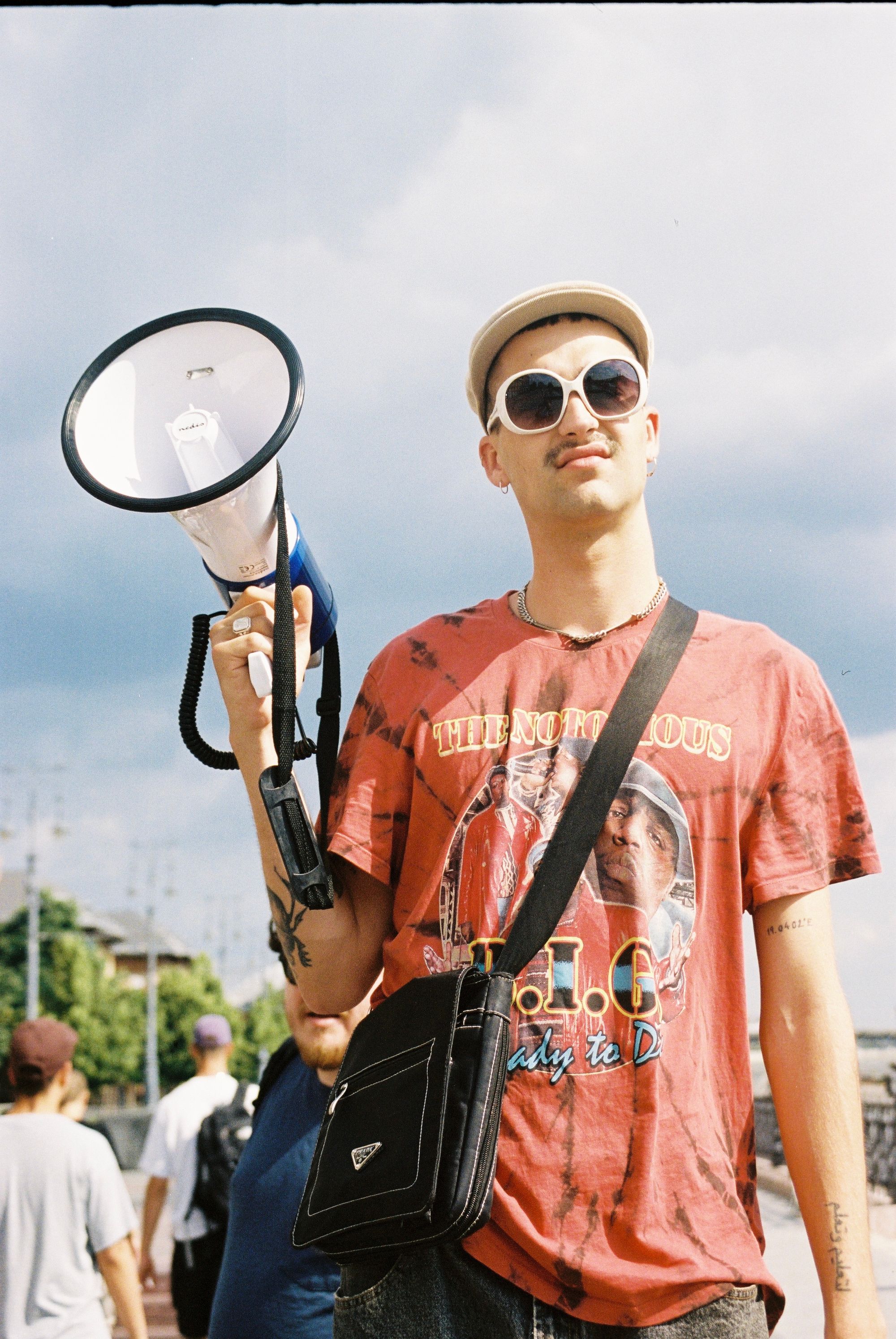Co Lee, or Kolos Halász in his civil name, is a relatively new, but all the more charismatic figure on the Hungarian music scene. After his initial English-language lyrics, Co Lee released a Hungarian-language album this year and opened up to the public a circus, in which we cry as hard as we laugh—this is Cirque de l’Homme. Interview.
You used to have mainly English lyrics, and last year’s album Air was made up of English songs, but Cirque de l’Homme made a splash with Hungarian lyrics, and explicitly outspoken ones, too. What was your reasoning behind the switch? Was it a path to deeper self-expression or was it more about (potentially better) reception?
I was more interested in myself—by that, I mean looking inwards and seeing what was in and out of time. Switching to Hungarian was definitely not a conscious marketing move, it was simply that the Budapest community around me had reached a level that inspired me and I felt I could give something back to them in their own language. It’s all about ‘here and now’ for me. Coming up with English stuff has always been like, I have a world in my head that I can show people to some extent, but maybe only two-thirds of them can understand it to some degree.
For you, what is the difference between writing lyrics and rapping in English and Hungarian?
I think I can go with the flow a lot more in English and just let myself go, whereas in Hungarian it’s a much more delicate situation. If I had to describe the difference between the two, I’d say that in English it’s a bit like rapping with clothes on, and in Hungarian, it’s like rapping naked. Otherwise, rapping naked is quite enjoyable.

How did the audience receive Cirque de l’Homme? Was the response different from what you anticipated or was it what you expected?
I didn’t expect anything, I’m an expectation-free person in most situations. Expect the unexpected—I only prepare for what certainly won’t happen. Actually, the fact is that the album has been surprisingly well-received.
You had your album launch at the A38 on 11 March. In what way do you feel that concert was a milestone? How did you feel when you woke up the next day?
First of all, in terms of numbers, it was the biggest concert so far in the Co Lee era, and the fact that it sold out the A38’s Concert Hall is a really important aspect. We went for cheap ticket prices, but we wanted to make sure that as many as possible got to see what we had planned for the day, and we did—and I’m very happy about that. I didn’t fully wake up on Sunday I think, maybe not even on Monday—I started opening my eyes on Tuesday. I’m still digesting the concert. It was a very important moment; the whole thing was dreamlike. It makes me feel good!

Which is your favorite song from the album and why?
My favorite track is Játék (Game—The Transl.), and because it’s probably one of the most genuine tracks in the sense that it’s very honest. I would say Játék is one of the essences of the album.
The subject of Cirque de l’Homme is the circus, in which you are the clown. Do you plan to continue with this theme, or is it fulfilled with the album, and can the audience expect a new identity?
I don’t know that yet. What’s for sure is that for Cirque de l’Homme, I like to dress up in a pantomime outfit and paint my face. Actually, the funny thing is that I knew about five years ago that one of my first albums would be a circus-themed one. Even then I could clearly see the parallels and it was important to me, but I didn’t expect it to manifest itself on the Hungarian album. You can expect all sorts of new identities, but keep in mind that I’m a clown.

How do you see the issue of fame? Is it important to you how many people and how do they see you, or are artistic freedom and fulfillment the real priority?
Of course, artistic freedom and fulfillment are the real priority, and I don’t know how I feel about fame. Sometimes it’s still surreal that someone wants to take a picture of me when I’m walking home from somewhere hungover, but if it’s important to them, then sure. It’s certainly important to me to stay genuine, I don’t want to deceive myself, and I don’t want to compromise with myself or others, so I do what I can along those lines.
What are your goals and aspirations for the next few years? What are some milestones in music that you definitely want to reach?
This summer we’re performing at Sziget Festival, which has been on my list of local goals for a while, so I’m really looking forward to that. I definitely want to record another album, collaborate with artists, and see as many sides as possible of what and how I can contribute to the Hungarian music scene. In terms of milestones, I think one would be to perform at a major festival in the English-speaking world. I’d love to do a gig at Budapest Park at some point, but that’s something for the future, and I’m jamming in the present.

What was the most memorable moment in your musical career so far?
I think there have been many memorable moments. One that comes to mind is when we had the pleasure of being in the studio with John Foyle here in Hungary for Iceberg. Recently, I attended my sister’s debut concert, which felt as if I experienced it, even though it was her concert. It was a very important moment, because the path I’ve been on so far absolutely intersects with my sister’s, who is also starting to make music and write songs. If I could mention one more, I would say the first time I got to stand on the stage of Budapest Park with Beton.Hofi. That was beautiful.
Photos: Máté Kersner









